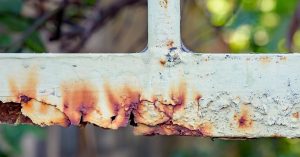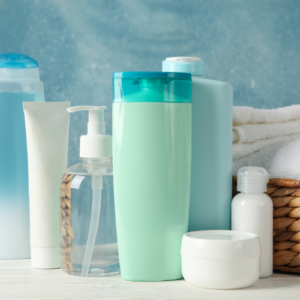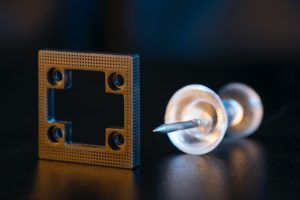ACC-ACSB, ASEAN COSMETICS ASSOCIATION, has recently updated on the target of 1,4 Dioxane control by 2023.
During the 30th ACC-ACSB meeting on June 18-21 in Nay Pyi Taw, Myanmar, ACC-ACSB has announced the Acceptable Trace Level of 1,4 Dioxane, and this has adopted by all AMS.
The grace period of compliance to this control is as below:
- 19 June 2020 –to meet the 25ppm
- 19 June 2023 –to meet the 10 ppm
1,4 Dioxane control has been presence and monitored for cosmetic products since late 1970 to 1997 by FDA, in which there was a limit of average of 50 ppm in 1981, 19 ppm in 1997, and 10-12 ppm in 2008. Subsequently, on Dec 15, 2015, Scientific Committee on Consumer Safety(SCCS) adopted an opinion, “Trace level of 1,4 Dioxane in finished cosmetics products of less than or equal to 10 ppm is SAFE”.
As the regulation from industry associations on 1,4-dioxane control for cosmetics and personal care products becomes stringent, Maha Chemicals anticipates there will be a re-formulation burdens from local manufacturers to comply the regulation.
Maha Chemicals predicts the majority of issues will be coming from the widely used surfactant, such as SLES, especially those whose source is not in a good control of 1,4 Dioxane, and also PEG which has been widely used in cosmetics products.1,4-dioxane is an impurity that can be found in trace amounts in cosmetic products such as shampoo, body wash, facial wash, liquid soap, bubble bath, deodorants, etc. Though, not used as a cosmetic ingredient on its own, the material is a by-product formed through a cosmetic ingredient manufacturing process known as ethoxylation. During the process of ethoxylation, it was identified that there is a potential contamination of 1,4 -dioxane on some surfactants like Sodium Lauryl Ether Sulfate (SLES) and other cosmetic ingredients include certain detergents, foaming agents, emulsifiers and solvents identifiable by the prefix, word, or syllable like:
- PEG
- Polyethyelene
- Polyethylene glycol
- Polyoxyethylene
- -eth (ceteareth, steareth, laureth, etc)
- -oxynol
Though 1,4-dioxane can easily be removed from products before they are sold, its widespread presence in products indicates that many manufacturers fail to take this simple step.1,4-dioxane has been classified differently across the international or local regulations, but most of them are classified as potential carcinogenic agent. The following bodies and organizations have classified 1,4-dioxane as:
- EU: category 2 (suspected of causing cancer).
- International Agency for Research on Cancer ( IARC): Group 2B (possibly carcinogenic to humans)
- US Environmental Protection Agency (US EPA): Group 2B (probable human carcinogen or likely to be carcinogenic to humans)
- Occupational Safety and Health (NIOSH): Potential occupational carcinogen
MahaChem and its partner, Sino Lion, have researched together by comparing widely used surfactants with the latest natural green surfactants, Amino Acid based Surfactant and Alkyl Polyglucosides(APGs) developed by Sino Lion.
Please refer to the tables below to see the comparison results.
| Surfactant | Main Feed Stocks | Main Impurities | Remark |
|---|---|---|---|
| Amino Acid based surfactant | Fatty acids, Amino acids | Amino acids, Fatty acids, Sodium Chloride | Safe impurities, natural origin, sustainable, renewable raw material |
| Alkyl Polyglucoside (APG) | Fatty alcohol, glucose | Fatty alcohol, glucose | |
| SLES | Fatty alcohol, EO, Sulfur | Dioxane | Impurities are not safe and irritating and toxic. Main raw materials are not natural origin and not sustainable/renewable |
| Isethionates | Fatty acid, EO, sodium sulfite | Dioxane, sodium isethionate |
| Attributes | Glutamate/ Alaninate |
APG | Betaines | SLES | Alkyl Sulfosuccinate | AOS | Imidazolidine/ Amphoacetate |
Isethionate |
|---|---|---|---|---|---|---|---|---|
| Free from Toxic Residues/ Dioxane | Yes ☆☆☆☆☆ | Yes ☆☆☆☆☆ | No ☆☆ |
No ☆ |
No ☆☆ |
No ☆☆ |
No ☆☆ |
No ☆ |
| Natural & Sustainable | ☆☆☆☆☆ | ☆☆☆☆☆ | ☆☆ | ☆☆☆ | ☆☆ | ☆ | ☆☆ | ☆☆ |
| Mildness (see previous slide) | ☆☆☆☆☆ | ☆☆☆☆ | ☆☆☆ | ☆☆ | ☆☆☆☆ | ☆☆ | ☆☆ | ☆☆☆ |
| Effect on skin ( harsh & Adsorption) | ☆☆☆☆☆ | ☆☆☆☆ | ☆☆☆ | ☆ | ☆☆☆ | ☆☆ | ☆☆☆ | ☆☆☆ |
| Biodegradable | ☆☆☆☆☆ | ☆☆☆☆☆ | ☆☆☆☆ | ☆☆☆ | ☆☆☆☆ | ☆☆☆ | ☆☆☆☆ | ☆☆☆☆ |
| Carbon Footprint | ☆☆☆☆☆ | ☆☆☆☆ | ☆☆☆ | ☆☆☆ | ☆☆☆ | ☆☆☆ | ☆☆☆ | ☆☆☆☆ |
| Energy Savings | ☆☆☆☆☆ | ☆☆☆☆ | ☆☆☆ | ☆☆☆ | ☆☆☆ | ☆☆☆ | ☆☆☆ | ☆☆☆☆ |
| Formulation Compatibility & Easy to Formulate | ☆☆☆ | ☆☆☆☆ | ☆☆☆☆☆ | ☆☆☆☆☆ | ☆☆☆☆ | ☆☆☆☆ | ☆☆☆☆ | ☆☆☆☆ |
| Hard Water Tolerance | ☆☆☆☆☆ | ☆☆☆☆☆ | ☆☆☆☆☆ | ☆☆☆☆☆ | ☆☆☆☆☆ | ☆☆☆☆☆ | ☆☆☆☆☆ | ☆☆☆☆☆ |
| Total Score | 46 | 42 | 35 | 31 | 34 | 30 | 31 | 34 |
| Excellent =☆☆☆☆☆; Good = ☆☆☆☆; Fair = ☆☆☆; Poor = ☆☆; Very Poor = ☆ | ||||||||
What will you do with your formulation now? If you are interested in our solution, please check out the details of some of our representative grades shown below.
If you want to inquire further, please contact us via button below.



